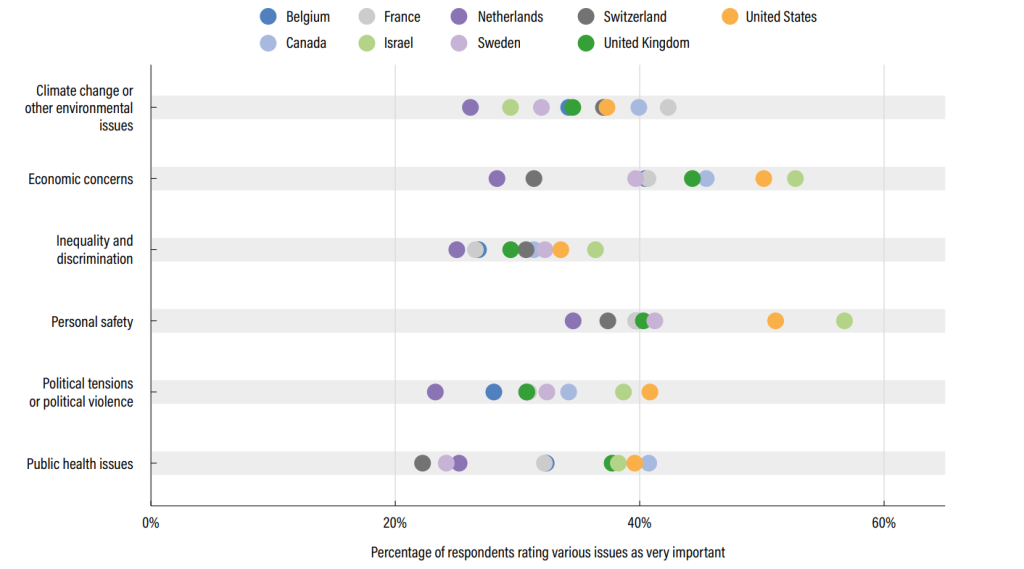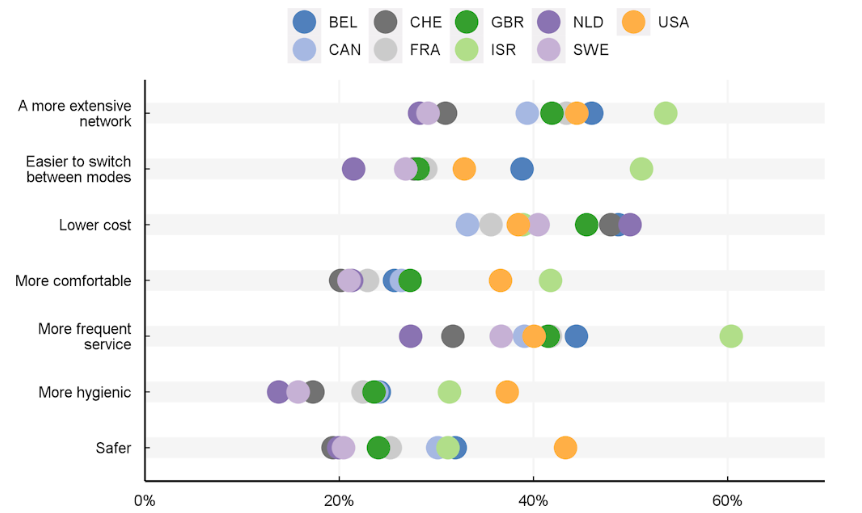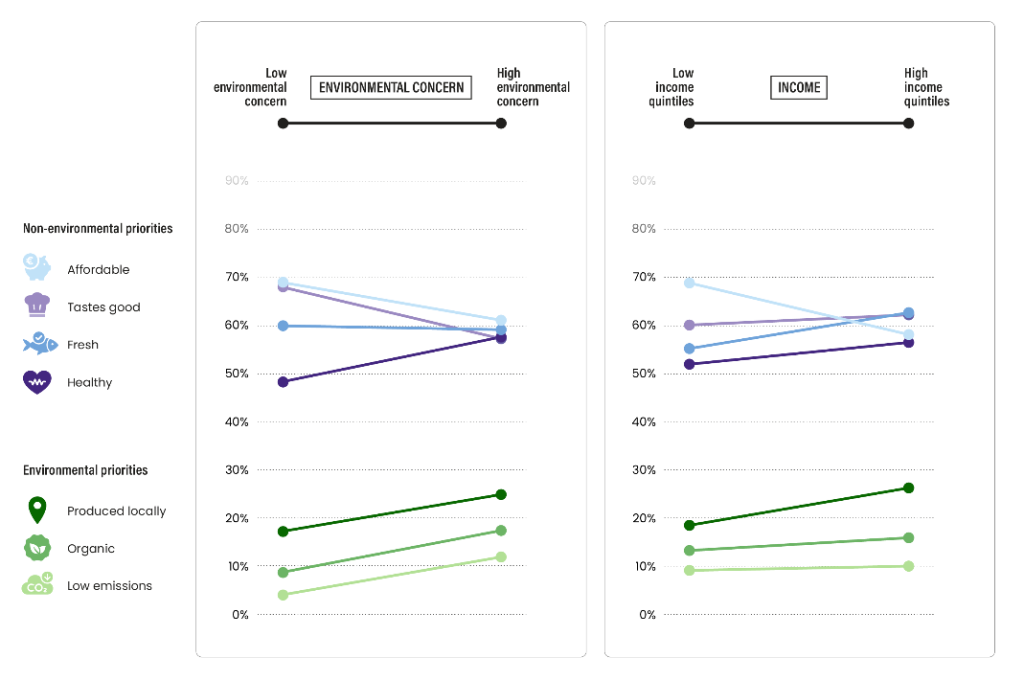Environment Focus
An environmental lens on policies for better lives
The role of households in a more sustainable future
Nicolina Lamhauge, Katherine Hassett, Rose Mba Mébiame and Ioannis Tikoudis, OECD Environment Directorate

Autumn in Paris brings back memories of a cold and uncomfortable winter last year. Not because temperatures were particularly low – quite the opposite. Like a number of other European countries (e.g. Germany, the Netherlands and Denmark), France implemented heating restrictions for public buildings and offices to conserve energy and decrease reliance on Russian gas. Households took similar action, by lowering thermostats, reducing hot water usage and retrofitting buildings. For many, this was a reaction to high energy prices, but for some, a response to calls for collective action. The reduced demand for energy in residential and commercial buildings across the European Union resulted in a drop in the demand for natural gas totalling 7 billion cubic metres in 2022. Over the same period, total demand across all sectors reduced by 55 billion cubic metres, equivalent to the amount of gas needed to supply over 40 million homes.
Households play an important role in contributing to efforts to limit climate change. Changes in individual and households’ daily choices could reduce greenhouse gas emissions by 40-70% across some sectors by 2050. However, to realise this potential, the supporting infrastructure must be in place as noted by IPCC Chair, Jim Skea: “people will not get on bikes if there are no cycle paths.” The same can be said for the switch to renewable sources of energy or public transportation, highlighting the important complementary role of public policy and investment.
The OECD report How Green is Household Behaviour? provides a picture of the environmental attitudes and behaviour of 17 000 households in 9 OECD countries (Belgium, Canada, France, Israel, Netherlands, Sweden, Switzerland, United Kingdom and the United States) as of mid-2022. The survey assesses households’ energy, transportation, waste, and food consumption habits. It shows that in a context of interlocking crises – the COVID pandemic, geo-political tensions and tumultuous energy and commodity markets – household concerns about the climate and the environment come second to concerns about the economy and personal safety. While most respondents (65%) are willing to make personal compromises to benefit the environment, almost as many (63%) feel that they should not pay more for such changes.
Figure 1. Concerns about the economy and personal safety outrank concerns about the climate and the environment in many countries

The OECD survey shows that while old habits die hard, making sustainable options available and affordable is an important first step.
Improved public transport would encourage regular car users to drive less
Let’s look at transport. 75% of all households report that at least one household member uses a conventional private car on a regular basis. This points to the role that alternative fuel vehicles can play in decarbonising the transport sector while helping households maintain their mobility. However, households are unlikely to change their transport habits without additional support from policymakers. For example, a third of households report that there are no charging stations for electric cars within three kilometres of where they live. Another priority for decarbonising the sector is improving public transport. Over half of regular car users (54%) indicate that more frequent services, better network coverage and lower fares would encourage them to drive less.
Figure 2. Measures that would encourage respondents to replace car use with public transport

Affordability, taste and freshness have a bigger impact on household food choices than their environmental impact
What does the picture look like for food consumption? One of the most impactful things households can do to reduce their carbon footprint is to reduce the amount of animal products consumed. However, only 9% of the households surveyed consider the potential carbon footprint of their food purchases. In comparison, over 60% prioritise affordability, taste and freshness when purchasing food. These findings are independent of people’s reported level of environmental concern or household income. This observation points to the importance of highlighting the affordability of sustainable food choices that in many cases are already available but require a change in habits. But as we know, changing habits is often easier said than done.
Figure 3. Environmental considerations are not high priorities when purchasing food
Percentage of respondents considering the factor important by environmental concern and income

Both individual and collective action are needed for a more sustainable future
The response to the energy crisis illustrates the role households can play in the transition to a more sustainable future. Equally, it highlights the potential fragility of such changes given the role that high prices played in temporarily bringing down demand. The important role of costs, but also convenience, in changing household behaviour is also evident in the OECD survey. Both individual and collective action are needed to make the vision for a more sustainable future a reality. To encourage the types of broad scale changes needed, policy makers must remove obstacles to sustainable choices and provide households sufficient incentives to adopt those choices. Well-designed environmental policies and related investments will play a critical role toward both ends. In support of such policy processes, the OECD continues to explore the drivers and determinants of individual and household choices, with ongoing work looking in depth at the four areas covered by the survey – energy use, transportation, waste management, and food consumption habits.
Further Readings
- OECD Household Surveys (EPIC)
- Policy Highlights – How Green is Household Behaviour?: Sustainable Choices in a Time of Interlocking Crises
- Full Report – How Green is Household Behaviour?: Sustainable Choices in a Time of Interlocking Crises
